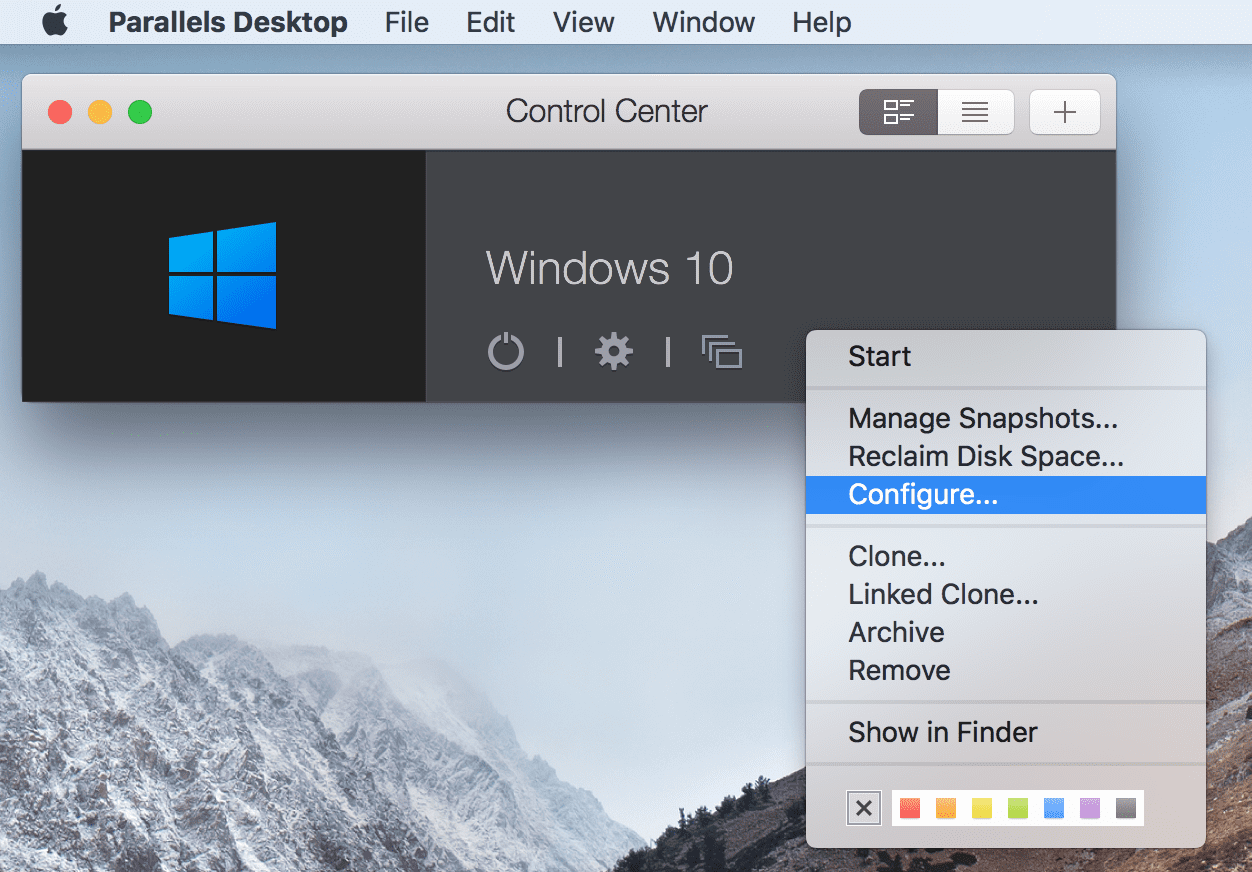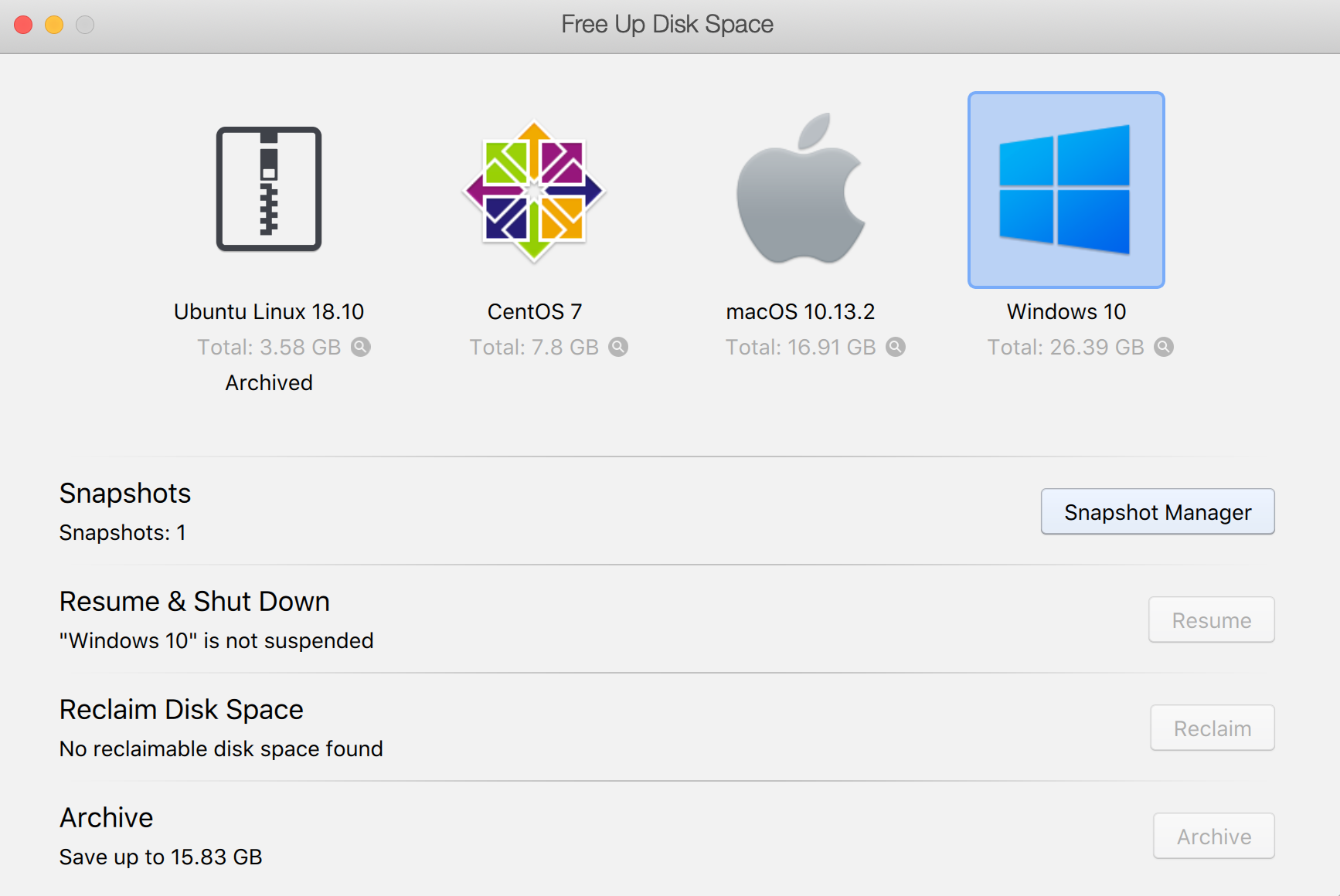Manually Delete Snapshots Parallels
- I deleted a snapshot and while it was cleaning the deleted files, I accidentally clicked the'Cancel' button. Now I'm probably with a lot of trash files in my HD. Is there any way to know what files to delete so that I can finish the job manually? Running VMWare Workstation 6.0.4.
- You can also use the Delete option to remove a corrupt snapshot and its files from an abandoned branch of the snapshot tree without merging them with the parent snapshot. Delete All Use the Delete All option to delete all snapshots from the Snapshot Manager. Delete all consolidates and writes the changes that occur between snapshots and the previous delta disk states to the base parent disk.
- Deleting a Snapshot. Start Parallels Desktop. In the Parallels Desktop Control Center, select your VM. Click Actions → Manage Snapshots. Select the snapshot you want to delete and click Delete. When you delete an intermediate snapshot, the information it contains is merged into the next snapshot. The Availability of Snapshots.
Right-click on a first snapshot and select 'Delete Snapshot and Its Subsequent Snapshots': If VMs are on a USB drive, please give it some time to complete, do not stop the operation as you might lose the entire VM. Dmitry@Parallels, Jun 15, 2018 #21.
Deleting a snapshot removes the snapshot from the Snapshot Manager. The snapshot files are consolidated and written to the parent snapshot disk and merge with the virtual machine base disk.
Deleting a snapshot does not change the virtual machine or other snapshots. Deleting a snapshot consolidates the changes between snapshots and previous disk states and writes all the data from the delta disk that contains the information about the deleted snapshot to the parent disk. When you delete the base parent snapshot, all changes merge with the base virtual machine disk.
To delete a snapshot, a large amount of information needs to be read and written to a disk. This process can reduce virtual machine performance until consolidation is complete. Consolidating snapshots removes redundant disks, which improves virtual machine performance and saves storage space. The time it takes to delete snapshots and consolidate the snapshot files depends on the amount of data that the guest operating system writes to the virtual disks after you take the last snapshot. The required time is proportional to the amount of data the virtual machine is writing during consolidation if the virtual machine is powered on.
Failure of disk consolidation can reduce the performance of virtual machines. You can check whether any virtual machines require separate consolidation operations by viewing a list. For information about locating and viewing the consolidation state of multiple virtual machines and running a separate consolidation operation, see vSphere Virtual Machine Administration.
To prevent snapshot files from merging with the parent snapshot if, for example, an update or installation fails, first use the Restore command to restore to a previous snapshot. This action invalidates the snapshot delta disks and deletes the memory file. You can then use the Delete option to remove the snapshot and any associated files.
Deleting a snapshot removes the snapshot from the Snapshot Manager. The snapshot files are consolidated and written to the parent snapshot disk and merge with the virtual machine base disk.

Deleting a snapshot does not change the virtual machine or other snapshots. Deleting a snapshot consolidates the changes between snapshots and previous disk states and writes all the data from the delta disk that contains the information about the deleted snapshot to the parent disk. When you delete the base parent snapshot, all changes merge with the base virtual machine disk.
To delete a snapshot, a large amount of information needs to be read and written to a disk. This process can reduce virtual machine performance until consolidation is complete. Consolidating snapshots removes redundant disks, which improves virtual machine performance and saves storage space. The time it takes to delete snapshots and consolidate the snapshot files depends on the amount of data that the guest operating system writes to the virtual disks after you take the last snapshot. The required time is proportional to the amount of data the virtual machine is writing during consolidation if the virtual machine is powered on.
Failure of disk consolidation can reduce the performance of virtual machines. You can check whether any virtual machines require separate consolidation operations by viewing a list. For information about locating and viewing the consolidation state of multiple virtual machines and running a separate consolidation operation, see vSphere Virtual Machine Administration.


Manually Delete Snapshots Parallels Windows 10
To prevent snapshot files from merging with the parent snapshot if, for example, an update or installation fails, first use the Restore command to restore to a previous snapshot. This action invalidates the snapshot delta disks and deletes the memory file. You can then use the Delete option to remove the snapshot and any associated files.